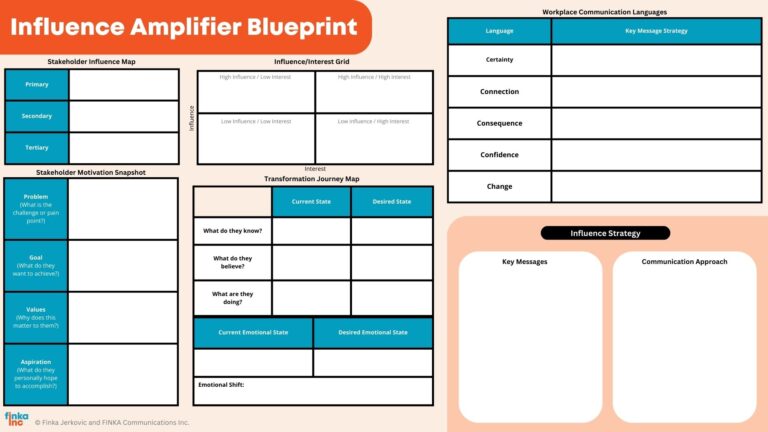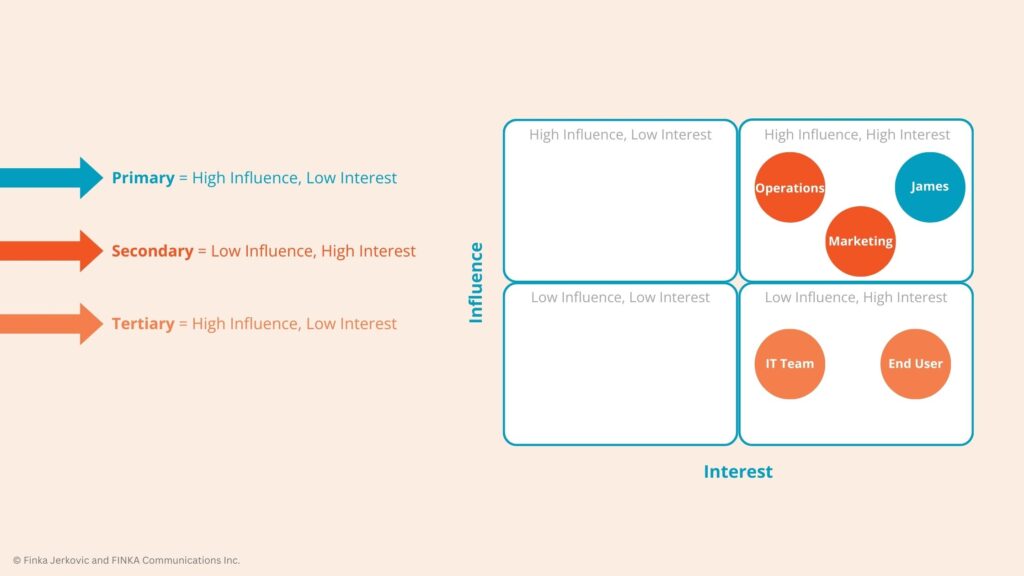Just like navigating your career and leadership journey, no one teaches you how to be influential at work. You sort of just figure it out as you go. But learning this way—full of guessing and wondering if you’re doing the right thing—comes chockfull of trials, errors, and missteps. There’s a better way to bolster your influence that won’t leave you confused and frustrated when you hear crickets, that actually inspires people to action and gets them excited to say yes to you. It’s all about your strategy. And in this blog, I’m going to give you three influencing strategies in leadership that you can’t ignore if you want to make waves in your company, rally people together, and make a meaningful impact at work. Let’s get started.
Are You an Audio Learner?
Build your influence strategy and discover how to influence without authority in the workplace by tuning into episode 195 of the Your Brilliant Difference Podcast.
How to Influence Others as a Leader
There are several ingredients when it comes to baking the layers of the transformational, brilliant leader cake. I always say that you need authenticity (your Brilliant Difference), but you also need influence.
Being a leader means guiding and inspiring people to action, to bring them together on a common goal, and you can’t do that without influence.
But the problem is, no one teaches you how to influence as a leader. Even in my corporate days, I leapt over hurdles, figuring out which strides worked and which didn’t. So, in this blog, I’ll be sharing with you everything that worked for me and got an executive to say yes to my initiative in 12 minutes. Yep. 12 minutes!
Now, everyone has different motivators and decision-making process preferences, so who or what you’re influencing may not come to fruition in 12 minutes, but the point is, these three rules I’m about to disclose to you work:
- Rule 1: Know your audience.
- Rule 2: Identify their motivators.
- Rule 3: Plot the transformation journey.
Still with me? These all sound good, right? But now you need to understand the essence of each and start applying it at work right now so you can amplify your influence.
And I do mean right now.
As you go through this blog, grab your copy of the Influence Amplifier Blueprint. Together, we’ll design an influence strategy so you can nail your next important conversation.

Rule 1: Know Your Audience
Influence Amplifier Blueprint Sections
- Stakeholder Influence Map
- Influence/Interest Grid
Out of all the influencing strategies in leadership, you cannot skip this section. I repeat, cannot. This is critical to successfully influencing a person or situation. Think of it as your solid foundation. The minute a house’s foundation is compromised, the entire structure can crumble. I don’t want that for you.
So, it’s time to know your audience. And that starts with knowing your type of stakeholders. A stakeholder is any person who has a stake (get it?) or say in the situation. Typically, they’re directly or indirectly impacted by your influence and the decisions of people you’re aiming to influence.
Stakeholders can be broken down into three types:
1. Primary
- The person who has the most critical relationship for your current influence objective.
- Direct decision-makers who can say “yes” to your proposal/request.
- People whose support is immediately required to move forward.
2. Secondary
- People who have the ear of your primary audience.
- People who are directly impacted by the decision of your idea.
- Those who will need to change their behaviour to adopt a new process.
3. Tertiary
- People on the periphery of the situation who still have some interest.
- Departments that may need to be consulted during the decision-making process.
- Future users or beneficiaries of your proposed idea/solution.
Now, keep in mind, Primary, Secondary, and Tertiary audiences can overlap or replace each other as a situation evolves. For instance, your Secondary stakeholder may turn into your Primary.
So now, going into your Influence Amplifier Blueprint, think of a person or situation you want to influence, and fill out the Stakeholder Influence Map.
One you’re done there, move on to the Influence/Interest Grid, a tool that helps you envision where your stakeholders exactly fit.

Using the section titles, definitions, typical audience types, and approaches, think of people in your situation and file them into their respected grid section in your blueprint.
It can look something like this:

This is an example of a hypothetical mid-level data analyst’s grid as they strive to pitch and implement a centralized analytics dashboard that would streamline reporting across multiple departments.
Rule 2: Identify Their Motivators
Influence Amplifier Blueprint Sections
- Workplace Communication Language
- Stakeholder Motivation Snapshot
The second rule on this list of influencing strategies in leadership is all about putting yourself in someone else’s shoes. People make decisions differently and they have specific communications styles, so you need to ensure you’re speaking their language and understand what will motivate them to say yes.
Under the Workplace Communication Language chart in your blueprint, you’ll see five different types of workplace communication languages that I’ve formulated over my years of sales, HR, and leadership development experience. They include:
- Certainty: The intention when speaking this language is to build TRUST.
- Connection: The intention when speaking this language is to build a RELATIONSHIP.
- Consequence: The intention when speaking this language is to show OPPORTUNITY.
- Confidence: The intention when speaking this language is to move to ACTION.
- Change: The intention when speaking this language is to facilitate TRANSFORMATION.
Lucky for you, I outline each of these communication styles in full detail in my Speak to Lead e-book. Download your copy and jot down your key messaging strategy.
As you’re going through the e-book, think about the preferences of your stakeholders, as well as where you fall in, so you can pivot and adjust your communication style.
Now it’s time to move onto the Stakeholder Motivation Snapshot, which answers:
- What is your stakeholder’s challenge or pain point?
- What do they want to achieve?
- Why does their goal matter to them?
- What do they personally hope to accomplish?
Rule 3: Plot the Transformation Journey
Influence Amplifier Blueprint Sections
- Transformation Journey Map
According to a research outline from Wonder, 90% of humans base their decisions on emotions. That’s why, when influencing a person or situation, it’s important to not focus on the solution and get into the weeds of execution. Your stakeholder won’t understand the impact when it’s framed this way. They need to know how it directly aligns with their agenda and the company’s, as well as their problems and goals.
That’s where the Transformation Journey Map comes in. It helps you centre your stakeholder and what they’ll experience during the influence and decision-making process.
It will help you understand their Current State and Desired State of what they know, believe, and are doing about the situation. It also outlines their Current Emotional State, Desired Emotional State, and Emotional Transformation, helping you see the situation from their perspective and gear the messaging toward what they’re feeling and experiencing.
Design Your Influence Strategy
Influence Amplifier Blueprint Sections
- Influence Strategy
Once you have all these pieces accounted for and filled out, you’re ready to build your Influence Strategy, which is comprised of the Key Messages and your Communication Approach from the Workplace Communication Language section.
Remember though, while the communication language and approach are your vehicle to deliver a successful message, you need to fill it with the right gas and put on the proper tires before you drive it. Meaning, you need to do elements from rules one, two, and three to build a strategy that actually works.
Your Influential Leadership Journey Doesn’t End Here
Mastering leadership and career skills can be hard and lonely, but I’m right there with you! I’ve figured it out and continue to, so you don’t have to. And I share all my teachings and experiences—like these influencing strategies in leadership—in my leadership development community: Find Your Brilliance. I would love to have you a part of this group of brilliant leaders so you can further flourish in the workplace and soar to your next level. Join the community today and take your leadership to new heights!


